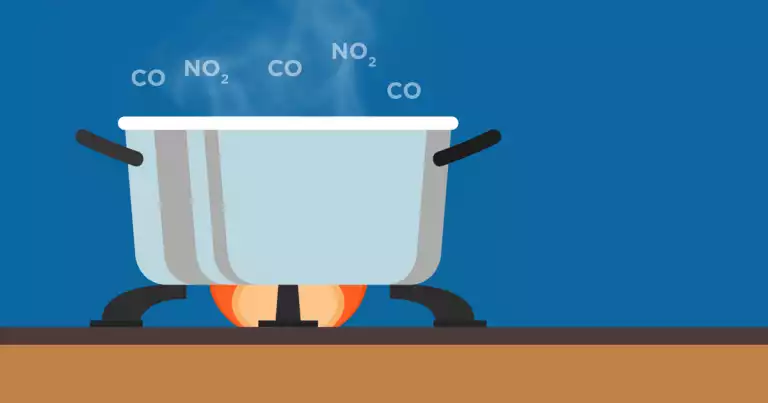How Cooking at Home Impacts Your Indoor Air Quality
3 minute read
Click play to listen to the How Cooking Impacts Your Indoor Air Quality article.
There’s nothing better than gathering with your friends and family and sitting down to a nice, home-cooked meal. But while cooking at home means you get to enjoy the lovely smells of freshly cooked food, it’s important to remember that cooking and baking can add volatile organic compounds (VOCs) and other particulate matter to the air you breathe.
Largest Sources of Air Pollution in the Kitchen
Different cooking methods can impact your Indoor Air Quality in unique ways, but whether you’re using natural gas, electric, or wood stoves to cook your food, cooking at home will generate unhealthy levels of air pollutants from heating oil, fat, and other ingredients. And the higher temperatures you’re using, the more airborne pollutants you’re creating.
Gas-powered stoves and ovens can create carbon monoxide and nitrogen dioxide into the air, while electric-powered appliances can release fine particles into the air. Self-cleaning ovens, regardless of whether they are electric or gas-powered, can also create high levels of pollutants when the food waste is burned away. No matter which way you’re choosing to cook, having proper ventilation in your kitchen is the best way to fight back against these pollutants.
Your Kitchen Appliances and Air Pollution
Stovetops
The kitchen exhaust fans above your stove make it easy to remove pollutants while frying vegetables or boiling pasta, but it’s not just food particles entering the air while you cook.
According to the California Air Resources Board, stovetops powered by natural gas and propane can produce carbon monoxide and formaldehyde. Nitrogen dioxide, a respiratory irritant, can also be produced by a gas burner.
Because there’s pollution both from the high heat of cooking and from the materials used to create the heat, you should turn on your kitchen exhaust fans from the moment you start cooking at home until a few minutes after you’re done.
Ovens
Baking or roasting at a low heat for long periods of time may not seem like they require ventilation because you don’t actively see smoke or steam. However, these cooking processes create large amounts of airborne pollutants over a long period of time and require persistent ventilation to minimize health risks.
Note: When you run the cleaning cycle on your oven, you especially need the ventilation turned on. The prolonged high temperatures burn away food waste, creating high amounts of VOCs.
Rarely Used Appliances
Your oven and stove are likely the largest sources of airborne pollutants when cooking at home, but you should also be aware of the impact of appliances you may use only occasionally, like toasters, deep fryers, and electric skillets.
Deep frying requires you to heat oil to high temperatures, which can create high levels of polycyclic aromatic hydrocarbons and cause eye and lung irritation.
A study from the University of Texas found toasters can immediately send toxic particles into your air, and that the smoke caused by burnt toast can be particularly harmful to your health.
Additionally, when these appliances are kept in storage, they can collect dust, which will burn away when the appliance is first turned on, adding particulate matter to the air. (You may recognize a particular smell when turning on these appliances for the first time in a while.)
The heating process on all small appliances will create VOCs, so make sure to use proper ventilation, like kitchen exhaust fans, when using cooking devices in your home.
Ventilation is Key
So how do you achieve the level of ventilation required to cook safely at home? Homebuilding expert Corbett Lunsford knows it’s important to consider Indoor Air Quality from day one of the building process. He recommends installing proper ventilation in several places in your home.
“Ventilation is crucial for reducing the concentration of VOCs in your home. You definitely want to ventilate anywhere there is moisture introduced to the home, like the bathrooms and kitchen.”
Having proper ventilation while you’re cooking at home is the key to maintaining quality air in your home. From a sizzling stovetop to a low-and-slow oven, keeping the kitchen exhaust fans on or opening a window will help remove the buildup of harmful substances in the air.
But one of the best ways to improve your Indoor Air Quality while cooking at home is installing an AprilAire Whole-House Ventilation System! The fresh air ventilation system works behind the scenes to add fresh air throughout your home and dilutes the airborne contaminants and pollutants that could be lingering in your air, creating a Healthy Air environment for you and your family.


